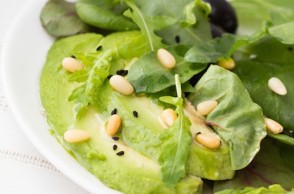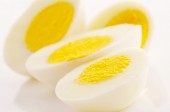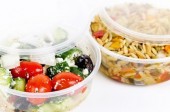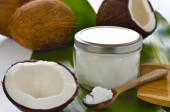Search Podcasts
If your body isn't getting the right "fuel," it can't function at peak levels.
Additional Info
- Segment Number 2
- Audio File naturally_savvy/1509ns3b.mp3
- Featured Speaker Kelly LeBrock
- Guest Website Kelly's Kitchen
- Guest Twitter Account @kellylebrock
-
Guest Bio
 Kelly Le Brock, celebrated actress model, and soon to be author is taking #weirdscience to a whole new level through creating her foodie platform by blending social media channels, and a APP developed by Priceline founder and TEDMED curator Jay Walker. She is launching her lifelong passion project called Kellys Kitchen, leading into it as a "very busy" CHANGE AGENT for healthy eating and launching #calories4good, helping FOOD BANKs across America. You can see more on her social media and website. She started this journey by participating in Partnership for a Healthier America's Twitter Chat in 2014 resulting in over 100 million impressions. Kelly and the Food Network were the most retweeted #cookathome activist six days after the chat which had over 175 contributors.
Kelly Le Brock, celebrated actress model, and soon to be author is taking #weirdscience to a whole new level through creating her foodie platform by blending social media channels, and a APP developed by Priceline founder and TEDMED curator Jay Walker. She is launching her lifelong passion project called Kellys Kitchen, leading into it as a "very busy" CHANGE AGENT for healthy eating and launching #calories4good, helping FOOD BANKs across America. You can see more on her social media and website. She started this journey by participating in Partnership for a Healthier America's Twitter Chat in 2014 resulting in over 100 million impressions. Kelly and the Food Network were the most retweeted #cookathome activist six days after the chat which had over 175 contributors.
-
Transcription
RadioMD Presents: Naturally Savvy | Original Air Date: February 25, 2015
Hosts: Andrea Donsky, RHN & Lisa Davis
Guest: Kelly Le Brock
Honest information about living a healthy lifestyle on RadioMD.com. It’s time for Naturally Savvy with natural visionary Andrea Donsky and health journalist, Lisa Davis.
LISA: I’m Lisa. So glad you’re listening to Naturally Savvy. My co-host Andrea Donsky is off today.
So, I start my day in an interesting way. I get a can of coconut milk, organic, without any guar gum or anything else. I put it in the fridge. I open it up, I add a little bit of Xyla and a little bit of cinnamon and it fills me up for hours. Now, the reason I do this is because healthy fat is good for us.
Here to talk about this is the fabulous Kelly LeBrock. Hi, Kelly.
KELLY: Hello, beautiful! Hello, Boston! I’m glad it’s warming up a little bit. Twenty below or whatever. Yes. You know, I’m much, much happier when I’m eating good fats. I know that sounds crazy. When I eat good fats, I’m thinner than when I don’t and anybody who has a nutritionist that says, “Low fat, no fat skim milk is good,” I would run for the hills because they are being given the wrong information. You’ve never seen a fatter nation and everybody’s “no fat”. Isn’t that true?
LISA: Yes. And, luckily, it’s starting to change. You know, I just spoke with Vinnie Tortorich in another segment about changing views on cholesterol. So, that’s why I wanted to continue this conversation with you and talking about recipes for healthy fat.
Now, what I mentioned isn’t exactly a recipe. I just take some coconut milk, but I try to eat coconut oil. They say you should have a couple of spoonfuls a day, but I just—I don’t know. For me, I don’t like the taste, so that’s why with the coconut milk. What do you do to get more coconut milk or coconut oil into your diet, Kelly?
KELLY: Well, coconut oil, I put it in my bath. I brush my dog’s teeth with it with a little hydrogen peroxide. I use it in everything. I use it to cook with because it can hold the high heats. It is hard to take down but if you put it into salads or you put it into smoothies; that works very nicely. You can also get coconut manna which is delicious. It’s like a butter. It’s a little bit sweeter. But, I’m kind of crazy. I also love raw butter and people say, “Oh, my goodness! That’s so expensive.” But, you know what? At the end of the day, it stops me from having to go to the doctors because my brain is getting the fats that it needs.
I really believe that people who are depressed are depressed because they’re literally dehydrated inside. It’s like if you have a car and you don’t put oil in it, it’s going to sound cranky, right?
LISA: That’s a good point.
KELLY: Basically, we’re just like cars. You need to put in the right water, the right oil. You have to change your tires which means changing your shoes. I don’t know. We’re very simple mechanisms and we’re trying to complicate all these diets. The bottom line is, the best thing for you is fats and one of the things that I love to do is make a gelatinous broth out of fish bones. You know, fish heads or any part that people throw out, I like to put into a soup stock that I make and I make it for like sometimes, 72 hours. And, I will just make it on a boil quickly and I turn it down to a low, low simmer. I throw in rosemary, a big head of garlic, an onion that I stick cloves into, ginger and I let that stuff cure. It’s like a witch’s broth. Then, if I’m sick, I have that to go by. Also, the ancient Chinese, they make these fish broths with the fish heads and it takes people that are terminally ill and gives them the nutrients that they need.
LISA: Oh, that’s fantastic.
KELLY: So, I’m a big proponent. It is fantastic. And then, like one of my favorite things when it’s really cold outside is to take my oatmeal, soak it in water overnight, cover it and soak it in water overnight. Then, you cook it the next day after you’ve drained off that water. It’s so rich and creamy. I throw in some beautiful raw cream with a little pat of raw butter, a little thing of Fresh Alt and some Grade B maple syrup and I’m in Tahiti. It’s so gorgeous.
LISA: It sounds wonderful. You know, a big thing now, I recently spoke with Dave Asprey, who is the Bulletproof diet guy, and I spoke with Grant Peterson, who’s really big into eating a ton of coconut, a ton of healthy fat, almost a no-carb diet. I do like my carbs from my fruits and vegetables. But, they’ve been talking about putting butter or coconut oil in coffee and that seems to be a big thing now. Have you heard about that? Or, tea in the morning?
KELLY: Oh, it’s been around for years. I believe that the Tai people, a lot of these nomadic people use it, too. Yes, because they know the benefits of that fat that floats on top of the hot morning beverage. It takes it and makes it smooth. It’s what this gelatin does. This gelatin broth that I make? It cures all kinds of digestion problems. It can be used successfully in many intestinal disorders like hyperacidity, colitis and Crohn’s because it has all these wonderful things in there that just push everything through. Yes. I’m right on that.
LISA: What about avocados? I know you make really nice avocado mousse that you’ve told me about before.
KELLY: Yes, I did. I love avocados. I’ll put them on anything. I’ll make a nice breakfast burrito and slap one of those on with my nice eggs. Yes, I gave you the recipe for the avocado mousse--chocolate mousse--which is more chocolate. You throw a little vanilla in there, a little agave syrup, little pinch of salt, mix it all in a blender and it’s just divine. You throw it in the fridge until it gets nice and cold and people think they’re eating rea chocolate.
LISA: Mmm. That is so nice. And, that creaminess is so desirable. I don’t eat dairy because I’m sensitive to it, so it’s nice for me. That’s why I love the coconut milk. So, for people out there if they’re vegan or they’re Paleo, there are so many great things you can do now with these healthy fats.
KELLY: Well, yes. And, like I said, I’m way thinner when I’m eating good, healthy fat. And also, you can make ice cream. A lot of ice cream. Do you know where the biggest amount of ice cream is ingested?
LISA: No, I don’t.
KELLY: Alaska. How crazy is that?
LISA: I wouldn’t have guessed that.
KELLY: I know! That’s why I’m bringing it up. It’s because people in Alaska, when it’s really cold, crave that fat. They’d be better off making a nice gelatin stew or whatever, but yes, that’s what it is. They’re craving those creams. Like, the Italians make a lovely gelato that is so rich and creamy that the ice cream isn’t even cold.
LISA: Oh, wow. See, I really like coconut oil ice cream.
KELLY: Oh, that sounds divine. And, also, if you don’t want to do the dairy and you want ice cream, you can use bananas. You peel them, then put the bananas in a nice freezer safe bag, put them in the freezer and then run them through your Champion juicer with whatever fruit you like and you have a lovely bowl of ice cream that’s not.
LISA: Oh, I like that, too. Now, Kelly, do you watch your grains or not really? Or, how does that work for you? It’s like I mentioned probably too many times, that I tend to be more Paleo. I don’t never eat grains, but I don’t eat them very often. I just feel better.
KELLY: I’m a naughty girl and I figure like, I don’t know how long I’m going to be here. None of us do, so if I want to have something, I’m going to have it. I stay away from the whites like white pasta because I’m a pasta freak. I think my mother’s first meal to me was spaghetti. And so now, instead of using white spaghetti, I use the brown rice. I do like my brown rice. I’m a girl that likes her carbs and I’m not going to shrink away from them. I don’t know that I feel that different whether I do or not, but the rest of the time, I eat pretty healthy. I soaked some quinoa last night and I’m sprouting it right now and that’ll be ready in 2 or 3 days. I like my quinoa.
LISA: Oh. Now, talk to us. How do you sprout it? I need to learn more about that.
KELLY: I soak it overnight and then I drain it the next day into a lovely colander that’s especially for sprouting and literally, I just, I keep playing with it. When it’s a little dry, I add a little more water and then, it gets long and hairy. When it’s long and hairy, then it’s time to cook it.
LISA: Really?
KELLY: It gives it a more nutritional value. I think it puts more fiber in it and it’s just delicious and it’s got more crunch to it. Then, I slap olive all over it. I don’t cook with olive oil. Olive oil doesn’t like to be heated up. If you want to use olive oil, use as much as you like, cook your meal and throw it on top afterwards as well as with the salt. You don’t want to cook with the salt. You want to use those as a condiment afterwards, a good quality one.
LISA: I’m so glad you mentioned that. Kelly, this has been great, as always. We have Kelly on twice a month here on Naturally Savvy. You can follow her on Twitter @Kelly LeBrock. I’m so glad you listened today. You can like us on Facebook and follow us on Twitter @RadioMD and @NaturallySavvy.
Have a great day and stay well. - Length (mins) 10
- Waiver Received Yes
- Internal Notes repeat guest
- Host Andrea Donsky, RHN and Lisa Davis, MPH
The newest research is changing the way doctors, individuals, and even government agencies view cholesterol's impact.
Additional Info
- Segment Number 1
- Audio File naturally_savvy/1509ns3a.mp3
- Featured Speaker Vinnie Tortorich
- Book Title Fitness Confidential
- Guest Website Vinnie Tortorich
- Guest Twitter Account @VinnieTortorich
-
Guest Bio
 Vinnie Tortorich is an author, radio and podcast host, fitness trainer, and model. For over 20 years, Vinnie has been Hollywood's go-to guy for celebrities and athletes looking to get fit fast. In 2012, he started the Angriest Trainer podcast with co-host Anna Vocino, who was best known for the self-improvised show Free Radio on Comedy Central. In July 2013, Vinnie released his second book called Fitness Confidential. The book was written with Dean Lorey and covers Vinnie's career as a personal trainer, as well as his "no sugar, no grains" approach to eating healthily. He is also the creator of Pure Vitamin Club, “the world’s best multivitamin supplement.”
Vinnie Tortorich is an author, radio and podcast host, fitness trainer, and model. For over 20 years, Vinnie has been Hollywood's go-to guy for celebrities and athletes looking to get fit fast. In 2012, he started the Angriest Trainer podcast with co-host Anna Vocino, who was best known for the self-improvised show Free Radio on Comedy Central. In July 2013, Vinnie released his second book called Fitness Confidential. The book was written with Dean Lorey and covers Vinnie's career as a personal trainer, as well as his "no sugar, no grains" approach to eating healthily. He is also the creator of Pure Vitamin Club, “the world’s best multivitamin supplement.”
- Length (mins) 10
- Waiver Received Yes
- Host Andrea Donsky, RHN and Lisa Davis, MPH
How do you know that the information you're reading (or watching) online is accurate?
Additional Info
- Segment Number 5
- Audio File naturally_savvy/1508ns3e.mp3
- Featured Speaker Jacob Teitelbaum, MD
- Book Title Real Cause, Real Cure
- Guest Website Jacob Teitelbaum, MD
- Guest Twitter Account @DrJTeitelbaum
-
Guest Bio
Jacob Teitelbaum, MD, is a board certified internist and Medical Director of the national Fibromyalgia and Fatigue Centers and Chronicity. He is author of the popular free iPhone application "Cures A-Z," and author of the best-selling book From Fatigued to Fantastic! (Avery/Penguin Group), Pain Free 1-2-3 — A Proven Program for Eliminating Chronic Pain Now (McGraw-Hill), Three Steps to Happiness: Healing Through Joy (Deva Press 2003), Beat Sugar Addiction NOW! (Fairwinds Press, 2010), and his newest book Real Cause, Real Cure (Rodale Press, July 15, 2011). Dr. Teitelbaum knows CFS/fibromyalgia as an insider — he contracted CFS when he was in medical school and had to drop out for a year to recover. In the ensuing 25 years, he has dedicated his career to finding effective treatment.
Dr. Teitelbaum does frequent media appearances including Good Morning America, CNN, Fox News Channel, the Dr. Oz Show and Oprah & Friends. - Length (mins) 10
- Waiver Received Yes
- Host Andrea Donsky, RHN and Lisa Davis, MPH
"GMO" and "non-GMO" are big buzz words these days, but what exactly are GMOs and why are they harmful?
Additional Info
- Segment Number 4
- Audio File naturally_savvy/1508ns3d.mp3
- Featured Speaker Gene I. Ridley, DN, ND
- Guest Website Herbal Solutions
- Guest Twitter Account @herbsolutions
-
Guest Bio
Dr. Gene I. Ridley is a naprapath, naturapath, herbalist, and natural healthcare physician in practice treating patients in Chicago for 32 years. He is also a practicing diagnostician specializing in kinesiology and has extensive knowledge in anatomy, physiology, chemistry and nutrition. These fields have provided him with keen insight into natural healing principles and applications. He has developed over 80 proprietary herbal formulas, used in his practice and around the world, to address and correct many diseases, especially chronic conditions. Dedicated to finding natural, effective, non-invasive methods of correcting and improving health issues, Dr. Ridley has assisted the healing process in several thousand people.
Dr. Ridley has been a featured speaker at the Green Festival, the Health Freedom Expo, the Corey Brooks Community Empowerment radio show and has conducted numerous workshops for Greenheart and community health organizations in Chicago. He was featured in a special documentary broadcast on WBEZ (Chicago NPR) during the series “Chicago Matters: Health." - Length (mins) 10
- Waiver Received Yes
- Host Andrea Donsky, RHN and Lisa Davis, MPH
Good, restful sleep is essential to help you recuperate from the stresses and toxic exposure of your day.
Additional Info
- Segment Number 3
- Audio File naturally_savvy/1508ns3c.mp3
- Featured Speaker Lisa & Ron Beres, Certified Green Building Professionals
- Book Title Just GREEN It! Simple Swaps to Save the Planet + Your Health
- Guest Website Ron and Lisa: The Healthy Home Dream Team
- Guest Facebook Account https://www.facebook.com/RonandLisaTheHealthyHomeDreamTeam
- Guest Twitter Account @RonandLisa
- Guest Bio Ron and Lisa Beres are Certified Green Building Professionals, Building Biologists and published authors of several books including, Just GREEN It! and the children's book, My Body My House. In addition to testing the health of homes, their consulting business includes celebrities and Fortune 500's. They are award winning television media experts and have appeared on The Rachael Ray Show, The Suzanne Show, The Doctors, Fox & Friends, The Today Show with Matt Lauer, NBC’s Nightly News with Brian Williams, Discovery’s Greenovate and Chelsea Lately on E!
- Length (mins) 10
- Waiver Received Yes
- Host Andrea Donsky, RHN and Lisa Davis, MPH
If you look at anxiety and related disorders as a riddle, might you better be able to resolve them?
Additional Info
- Segment Number 2
- Audio File naturally_savvy/1508ns3b.mp3
- Featured Speaker Scott Stossel, Author
- Book Title My Age of Anxiety: Fear, Hope, Dread, and the Search for Peace of Mind
- Guest Website Scott Stossel
- Guest Twitter Account @SStossel
- Guest Bio Scott Stossel is the editor of The Atlantic and the author of Sarge: The Life and Times of Sargent Shriver. His latest book, My Age of Anxiety: Fear, Hope, Dread, and the Search for Peace of Mind, is a national national bestseller. His articles and essays have appeared in The Atlantic, New Yorker, New Republic, New York Times, Wall Street Journal, and many other publications. He lives with his family in Washington, D.C.
-
Transcription
RadioMD Presents: Naturally Savvy | Original Air Date: February 18, 2015
Hosts: Andrea Donsky, RHN and Lisa Davis
Guest: Scott Stossel
LISA: This is Lisa Davis. Andrea Donsky is off today.
Growing up, I was a very shy child, which is hard to believe now because you can’t stop me from talking, but I was very uncomfortable. Any time I knew I had to give a speech or even if we were just going around the room saying something, my heart would beat so fast and I would turn bright red. The other kids used to call me “Cherry Face” because I was constantly embarrassed and constantly anxious and “Please don’t call on me,” and the whole nine yards.
Well, somebody who knows a lot about being anxious is our next guest, Scott Stossel. He is the national, best-selling author of My Age of Anxiety, Fear, Hope, Dread and the Search for Peace of Mind.
Hi, Scott.
SCOTT: Hi, Lisa. How are you?
LISA: I’m good. How are you?
SCOTT: I’m good, thanks. Thank you for having me on.
LISA: Oh, I’m so glad to have you on. Scott and I have had the pleasure of speaking before and I read his book cover to cover. It is absolutely fantastic. I highly recommend it. Now, it’s funny for me, Scott. My anxiety was really contained to just the classroom situation. In other areas of my life, I was okay. But for you, you talk about it being pretty crippling from the age of 2 on. Tell us a little bit about that.
SCOTT: Well, sure. And, I’ll start by saying that I can totally relate to your public speaking fears and, you know, I’ve had friends who’ve had blushing problems or many people who have acute public speaking fears, they become debilitating. They become so self-conscious about their blushing that they actually contemplate a surgery that you can get that cuts down on your blushing. Blushing for me is not a problem--it’s more sweating and other symptoms--but I remember being in high school and several times giving a presentation in front of the class and, suddenly, my head would start to swim and I’d have to excuse myself and sit down. Of course, when you’re a 7th grade boy and all your 12-year-old peers are laughing at you, that’s about as mortifying an experience as you can have at that age. But, like you said, my anxieties and phobias are from a young age and extended far beyond that and included things ranging from fear of heights and kind of claustrophobia to separation anxiety, sort of terror of my parents dying and being away from my parents to more idiosyncratic phobias like my emetophobia, which is the acute sort of pathological fear of vomiting and which I developed at a young age.
LISA: Yes. Those are so complicated and one of the things—I mean, there are so many great things in your book—you really go into the history of anxiety and I love how you call it the “riddle of anxiety”. Tell us a little bit about what you learned about this riddle.
SCOTT: Well, I learned a lot. It was, in some ways, therapeutic working on the book. I was always interested in kind of the history of the idea of anxiety and also the science. To some degree, anxiety remains a riddle, but it’s a riddle that the investigation of which really sheds light not just on anxiety, but on the whole human condition and that’s for a few reasons. The main reason being that anxiety, like any emotion and anxiety disorders and like any psychiatric or emotional disorder, are a mixture of sort of a physical problem. This is a problem. It’s a brain disease. It’s a dysfunction of neurotransmitter systems. People who are acutely anxious may have actual irregularities in the structure of their brain. At the same time, it’s also a psychological problem that’s sort of overlaid and may be independent of these physical problems. Then also, for many people, it may be sort of a philosophical or a spiritual problem about are you living the right life? You know, am I believing the right things? And so, solving the real anxiety, which is kind of a quote from a mid-century researcher in the 1950’s at Cornell named Howard Liddell, sort of growing on Freud, that if you can sort of solve the mystery of anxiety which, again, is evolutionary designed impulse that kind of goes awry, you learn a lot about how the brain relates to mind and how we come together as personalities.
LISA: One of the things that really struck me in the book, too, was the idea of coming out and you say, “For a long time, governed by reticence and shame, I told people who inquired about my book that it was a cultural and intellectual history of anxiety. True, as far as it goes, without revealing its personal aspects.” Tell us about that dinner party and how that really opened your eyes to things.
SCOTT: Yes. So, as you say, I’m 45 years old now and I developed anxiety when I was 5 or 6. I was first diagnosed when I was 10 and for the first three decades, I would go to great lengths to hide my anxiety. I would keep my pills hidden away and I would go to elaborate lengths to conceal—make up excuses for--why I was disappearing for therapy appointments. And then, as I was working on the book, I was at this dinner party, as you alluded to and I sort of, for the first time, gingerly mentioned that it’s an intellectual and scientific history of anxiety, but it’s also kind of a memoir about my own experiences and to my astonishment…It was a dinner party. We were there with probably 12 other people at the table and about 6 within earshot and all those 6 immediately came forward and shared their own experiences of anxiety which were not limited experiences. I think 4 out of the 6 of them had taken medications of various kinds, some had had panic attacks, some of them had been hospitalized, some of them had similar phobias. Some of them were completely different and that was at the point I realized, when they came forward and shared with that sort of enthusiasm and sympathy, I realized, “Well, maybe coming out with this will not be shameful and isolating as I feared it might, but actually kind of empowering and, you know, create solidarity between me and my fellow anxiety sufferers.”
LISA: Yes. I think it makes so much sense to come out and talk about it. Another thing, too, you write is, “I don’t have to look far to find evidence of anxiety as a family trait.” You write about your great-grandfather. You know, I look at my daughter who has anxiety and Autism spectrum and ADHD and a couple other things. I look at my family--my husband’s family and my family. I’m like, “Oh, yeah. Okay. This makes sense.” So, that was something that I think I really do see that genetic link.
SCOTT: Yes. Absolutely. I mean, kind of going into the book I had a sort of intuitive sense of that because I knew, as you said, that my mother and father’s father had, despite having a very successful career for many years, he’d always been an anxious person and in his 50’s, which was in the late 1940’s, in the 40’s, 50’s and 60’s, he spent much of his time in and out of psychiatric hospitals undergoing all kinds of therapies. Then, my mother kind of had…I always assumed I learned from watching her a lot of my anxious temperament and some of my specific phobias. Looking at the scientific literature, there are piles and piles of research now accumulating about what different genes and constellation of genes contribute to anxiety disorders. So, I never want to say, and no one should ever conclude, that our genes are our destiny or that your heredity is going to doom you to being eternally anxious or blessed you with immunity to it, but it’s a strong contributing factor. Then, of course, that interacts with the nature of your upbringing and the kinds of things you go through in life--trauma and so forth-- and sort of helps determine whether you will develop an anxiety disorder or be relatively serene.
LISA: You know, here on Naturally Savvy, we talk a lot about natural health and using alternative medicine, but I have to be quite frank. I think medication is great for some things and I think that if that’s something that somebody needs and they might do it in conjunction with or they’ve tried the natural remedies and there’s a certain point in their life where they’re like, “You know what? This medication’s really helping me,” I have nothing against that. So, I just want to throw that out there. It might be shocking to some listeners, but I think it’s really important to keep an open mind and not be judgy.
SCOTT: Yes and what I would say is--and I talk a lot about medication in my book and I have mixed feelings about it myself. I think all things being equal, you’re better off not having to rely on medication for anxiety or whatever your psychological ailment may be. There are side effects associated with them and dependency issues and sometimes the drugs are just masking or treating symptoms but not the underlying problem and they’re actually keeping you from addressing the underlying problem.
But, all that said, if you are in acute distress, for many people, including myself at times, taking a pill is the difference between the ability to lead a kind of normal, functional life and being rather debilitated and housebound. So, I agree with you.
LISA: Scott, the time goes by way too fast. I say that all the time. My Age of Anxiety, Fear, Hope, Dread and the Search for Peace of Mind. You can learn more about Scott by going to www.ScottStossel.com. That’s one “L” in Stossel.
I just want to thank you. This book really is so incredible and the research and your own personal story. So, thank you so much for coming on Naturally Savvy.
It’s been such a pleasure.
SCOTT: Well, thanks so much for having me. I really appreciate it.
LISA: So, be sure to listen to Naturally Savvy here on RadioMD. You can like us on Facebook, follow us on Twitter at Your RadioMD and at Naturally Savvy.
Stay well. Take care of yourself and have a great day. - Length (mins) 10
- Waiver Received Yes
- Host Andrea Donsky, RHN and Lisa Davis, MPH
The stigma attached to mental health disorders can leave you suffering in silence.
Additional Info
- Segment Number 1
- Audio File naturally_savvy/1508ns3a.mp3
- Featured Speaker Sarah Fader
- Guest Website Stigma Fighters
- Guest Twitter Account @stigmafighters
- Guest Bio Sarah Fader is the CEO and Founder of Stigma Fighters, a campaign platform that encourages individuals with mental illness to share their personal stories. She is an author and blogger, having been featured on Psychology Today, Huffington Post, HuffPost Live, and Good Day New York. Sarah is a native New Yorker who enjoys naps, talking to strangers, and caring for her two small humans and two average-sized cats. Like six million other Americans, Sarah lives with panic disorder. Through Stigma Fighters, Sarah hopes to change the world, one mental health stigma at a time.
-
Transcription
RadioMD Presents: Naturally Savvy | Original Air Date: February 18, 2015
Hosts: Andrea Donsky, RHN and Lisa Davis
Guest: Sarah Fader
LISA: Andrea is off today. A few months ago, I had a book that I co-edited and published called Easy to Love but Hard to Live With: Real People, Invisible Disabilities, True Stories and people with mental illnesses or Autism spectrum disorder, dyslexia, ADHD, anything you look at the person and you can’t tell. So I wish I had known this back when I was putting my book together, but now she has an anthology coming out. She is the fantastic Sarah Fader who started Stigma Fighters.
Hi, Sarah.
Oh, it’s so nice to have you on, Sarah. This is such an important topic. If you don’t mind, tell us a little bit about yourself, your own personal experience with mental illness and when you decided that, you know what? We need to share our stories to make a difference.
SARAH: I am 35 years old. I have lived panic disorder for my entire adult life. I started having panic attacks when I was 15 and I didn’t know what they were. I just knew that I was experiencing severe symptoms of racing heart and I felt very fearful of what I was experiencing. Luckily, I do have a mother who copes with anxiety and so she was able to guide me through and direct me to help. I got into therapy very quickly but I still lived in silence for the majority of my teenage years and my adult life until I had children and I started to reflect on what it would be like for them if they were to grow up with an anxiety disorder or depression. How would they feel about living in silence? And that’s when I decided that I wanted to share my story publicly about living with panic disorder. So, I wrote about it on the Huffington Post—on their “Healthy Living” section and I received tremendous feedback from all over the world about my story and people saying, “Thank you for being so honest,” and “I live with anxiety,” and “I’m so glad that you’re able to speak up so candidly.” What it made me think was that there is no place--or there was no place--for people to be able to share their story about living with mental illness. So, I created Stigma Fighters. StigmaFighters.com began as a blog series where people could share their stories about living with schizophrenia, PTSD, depression, anxiety, OCD, borderline personality disorder. We have a collection of essays that range about just so many wonderful journeys and people speaking freely about these conditions. These invisible illnesses, as you mentioned before. So, I’m very happy that people have a place to be vocal about these issues. Then, I actually decided that I wanted to make Stigma Fighters come off of the internet and become a non-profit organization. I wanted people to go into high schools and colleges and speak about mental illness and that is the next step for Stigma Fighters. So, we are in the process of obtaining our 501(c)(3). We’ve filed and, in the meantime, we are publishing an anthology of stories from the website with Bookthrope. So, I’m very excited about that.
LISA: Oh, I am so excited about that it as well. You know, I grew up with somebody very close to me who had agoraphobia and I would say, “You should just tell people, you know, why you can’t go the party,” and she’d be like, “What? I can’t. They’re not going to understand.” I think maybe I’m unusual or something because I was like, “Well, just tell them. What if you had diabetes, right?” But, it doesn’t work that way in our society, does it? Unfortunately.
SARAH: It really doesn’t and when I was younger, I used to have a litany of excuses as to why I could not attend events. I would just make things up because I wasn’t comfortable telling people, “It’s because I have anxiety.” It’s not—or, it wasn’t—socially acceptable to say that. I do have somewhat of a struggle with social anxiety as well, so I can relate to that agoraphobia story. I think the dialogue is changing now. I think people are more willing to talk about mental health. Obviously, there’s still stigma, but I think that we are working so hard, especially here at Stigma Fighters, to stop people from being silenced and being able to say, “You know what? I can’t hang out tonight because I’m feeling anxious and I’m feeling like I need to spend time by myself. I don’t feel like I can be around other people at the moment.”
LISA: That is so important, Sarah. It makes such a huge difference. What are some natural things that you do to help your own anxiety? Or, what have you heard that has worked for other people as well?
SARAH: I’ve practiced mindfulness meditation since I was about 17. It was the only thing that helped me with anxiety when I was younger. I was in therapy but I was not, at the time, on medication and it was a game-changer for me. Meditation is essential for people that have anxiety. It is so important because it reminds you that you are in your physical body and you can come back to basics. You can remember that, even though you are experiencing physical symptoms of anxiety, you will be okay and you are still breathing and you are still alive and you will get through this. Meditation is just absolutely wonderful.
LISA: Oh, that’s great. You know, explain panic disorder for people who aren’t really familiar with what that exactly means.
SARAH: Panic disorder is an anxiety condition in which you feel a threat. So, you feel that something is threatening you and you’re experiencing racing heart and chills. The three things that are associated with a panic attack are fight, flight or freeze. So, you’re going to feel like you need to run away, fight it or you’ll freeze and that is how you feel during a panic attack.
It is as if you have a bear chasing you but there is no bear. It is extremely terrifying to experience it. To experience a panic attack, you feel alone. You feel like you cannot control what’s happening in your body. There are so many physiological symptoms associated with anxiety or panic. If you don’t know what you’re experiencing, it can be very, very, very scary.
LISA: You know the person I mentioned earlier that I grew up with who I was close to, she said it felt like you were going to die. Like it was just absolutely horrendous. So, I know that it can be so scary.
What have you learned through some of the stories? Has it made you feel less alone? Does it give you hope? Give us some of the things that have come out of this for you.
SARAH: I find all of the stories on Stigma Fighters inspiring because it shows me that we are not alone even if we think that we are the only person experiencing depression, loneliness, anxiety, OCD. It reminds me that all those years I felt isolated, look at all the people around me that were feeling similar feelings. It is so enlightening. So, I read those stories and I feel empowered and inspired. I feel like I can go and live another day and like we are so similar as human beings and we don’t even know.
LISA: Oh, I love that. Now, Sarah, for people listening, if they’re thinking, “Geeze, I have a story I want to share.” How would they do that?
SARAH: Well, you can go to StigmaFighters.com and you can click on the “submit” link. We have a submission form and you can type your story right into that form and submit it. We will publish your story if it is a personal narrative. This is the thing that we stress about Stigma Fighters. It needs to be something that has never been published before and it is about you and your experience with mental health issues.
LISA: Well, Sarah, it has been so great having you on. The time goes by way too fast.
You can learn more by going to www.StigmaFighters.com. You can also follow Sarah at OSNSMom and at StigmaFighters.com.
So glad you’re listening to Naturally Savvy on RadioMD. Be sure to like us on Facebook. Follow us on Twitter @NaturallySavvy and @YourRadioMD.
Stay well and have a great day.
- Length (mins) 10
- Waiver Received Yes
- Host Andrea Donsky, RHN and Lisa Davis, MPH
If you're a vegetarian and your husband (or wife) isn't, are you doomed to eat separate meals for life?
Additional Info
- Segment Number 5
- Audio File naturally_savvy/1507ns3e.mp3
- Featured Speaker Katie Parker, Author & Blogger
- Book Title The High-Protein Vegetarian Cookbook
- Guest Website Veggie and the Beast
- Guest Twitter Account @veggiebeastblog
- Guest Bio Katie Parker is the author of The High-Protein Vegetarian Cookbook, and the founder, recipe developer, writer, and photographer for the food blog Veggie and the Beast. She’s been a vegetarian since the age of three, while her longtime love Ryan (“The Beast”) grew up bow hunting and eating venison steaks. To please both of their tastes, Katie focuses on simple, approachable, crowd-pleasing vegetarian recipes that people of all diets can enjoy. She believes that sharing food brings people together and builds relationships, even if one of you craves a lentil patty while the other yearns for a bacon cheeseburger. She and Ryan live together in Edina, MN, with their dachshund-mutt puppy Teia.
-
Transcription
RadioMD Presents: Naturally Savvy | Original Air Date: February 11, 2015
Hosts: Andrea Donsky, RHN and Lisa Davis, MPH
Guest: Katie Parker
Lisa: They say that opposites attract and sometime they do in terms of how you eat, rather than how your partner eats. I’m a big fan of Katie Parker. She has a wonderful blog: Veggie and the beast. She grew up as a vegetarian, whereas her husband grew up hunting venison. Is that correct Katie?
Katie: Yeah, He’s a big hunter. He primarily hunts deer but he also does turkey hunting and duck hunting as well.
Lisa: You were able to get some good, high-protein, vegetarian recipes which we’re going to talk about today. Also, you have some things that your hubby will eat, that are high-protein vegetarian and he can add some meat, or vegetarians can eat. You were a vegetarian since you were 3. I’m assuming this was your parent’s influence?
Katie: Somewhat. My mom is a vegetarian. I ate meat when I was really little; I just never really liked it. I was just very stubborn when I was little and my older brother was teasing me when I was eating a casserole, of course we love our casseroles in Minnesota, I was eating a cheese and ham casserole and he said: “Katie, you know you are eating a pig right now.” I was grossed out and I wouldn’t believe it. My mom told me I was and I told her I wasn’t going to eat it and I never did again. I was a stubborn little person and turned in to a stubborn adult.
Lisa: Good for you. I want to know more about how you do it. It’s really hard when you live with someone that doesn’t really eat the way you do. Obviously you knew this going into your relationship. How do you guys make it work?
Katie: We love to cook together. I’m really fortunate that he enjoys cooking with me and he’s also very adventurous. I don’t feed him tofu that often, but he’s willing to try anything. We just really focus on meals that I know that he really enjoys, like pastas. We like making pizzas together. I try to focus on getting at least one protein source into every meal: whether that’s whole grains, lentils, beans, or we both really like Thai peanut noodles with peanut butter sauce. Just making sure that they are really filling and satisfying meals and we’re not just eating a boring salad all the time, which I know a lot of people think vegetarians do. You eat rabbit food; everything you eat is green and leafy. I do like my salads. I am a veggie loving person, but I also know that sometimes, if you’re with a person that has a bigger appetite, you need something a little more substantial.
Lisa: Does it bother you if he cooks meat and has it with something that you make, or does he normally just say: “Oh! This is so satisfying and filling I don’t need to have the meat on these recipes.”
Katie: It kind of goes both ways. We’ll go weeks without having any meat in the house and then sometimes he’ll just get a craving for it, so he’ll cook up some of the venison that he has and put it on pasta. It doesn’t bother me at all. He does that sometimes, but most of the time eats vegetarian. A lot of his friends, that knew him growing up, think that’s pretty funny.
Andrea: I was going to say, I have a husband who’s a total carnivore. If I even have one meal a week that has no meat in it, he’s like: “No thank you.” He needs his meat and potatoes. I find it interesting. I’m guessing your husband isn’t really that much of a carnivore. He’s able to go a little bit without it. A lot of men very much want their meat and potatoes. It’s cool that you’re able to not get grossed out about it and are able to say: “Well, this is the way it is. You eat the way you eat, and I eat the way I eat, and let’s make it work.” I think that’s cool
Katie: Yeah, it really doesn’t matter to me. Everybody has their things that they like to eat. What I like to eat is not always what he wants to have. That’s just kind of the way relationships go, even if you aren’t a vegetarian and a meat eater.
Lisa: That’s so true. Let’s jump into this fabulous book of yours. The High-Protein Vegetarian Cookbook: Hearty Dishes That Even Carnivores Will Love. Talk to us about what you have. Let me tell you what you have: You have breakfasts, you have soups, you’ve got salads, and you’ve got grains, pizzas, pastas, burgers, sandwiches. What are some of your favorite recipes in the book?
Katie: I really love the 20 minute enchilada skillet. It’s in the book and also on my blog. It’s really easy and great for weeknights. Brian loves Mexican so it’s a good meal that both of us enjoy and it comes together in 20 minutes. That’s just olive oil, vegetables, black beans, enchilada sauce, and sliced corn tortillas. Then you just broil it for 3-5 minutes. That’s really easy and I like it during the week because it keeps well for weekday lunches. I also really love veggie burgers. Brian usually like veggie burgers as well, especially when they are the heartier kind. I like to make them as protein packed as possible. I have one in the book called the Protein Powerhouse Burger. Those are made with quinoa, black lentils, black beans, and walnuts. They are packed full of those good ingredients that fill you up.
Andrea: Katie, what I’d like to know is: Recently we wrote an article on Naturally Savvy about high-protein for vegetarians. What would be, let’s say, the three top sources of protein for people who are vegetarian?
Katie: I would say beans, just because they are very easy, cheap, and a really good source of protein. Nuts and ant butters, I eat almond butter and peanut butter every day. You can cook with it, bake with it, I eat it by the spoonful. I’m kind of weird like that. I love that. Then the whole grains, I eat a lot of whole grains: Quinoa, barely, mille, and whole wheat pasta when we eat pasta. It’s just an easy way to get extra protein in there.
Lisa: Katie, you just said something. Did you say ‘mille’ when you were listing some of the foods?
Katie: Yeah, I’m wondering now if I’m saying it wrong.
Lisa: I’ve never heard of it, what is it? What kind of grain is it?
Katie: It’s really similar to quinoa. It cooks in a similar way to quinoa.
Andrea: You’re talking about millet. Millet is actually delicious; I love millet.
Katie: Yeah, I love it. I cook with it all the time. It holds it texture better than quinoa. Sometimes quinoa’s texture is a little bit mushy and off-putting, depending on how you cook it. I think it’s a little bit more forgiving in the way you cook it and what you put it in. It’s something that I really like to make and Brian likes it as well. We put it in a lot of things. We stuff peppers with it. I have an enchilada stuffed millet sweet potato recipe on my blog. It’s a really good whole grain and also a good source of protein.
Lisa: I want to go back to what you said about the nut butters and eating them with a spoon. You’re not weird. If you’re weird, I’m weird too. What I did this morning was, I took a little bit of peanut butter and I mixed it up with some very dark chocolate chips. I just sat there and ate it.
Katie: Nice, I’ve definitely done that before.
Lisa: It’s healthier than a regular peanut butter cup. I actually added a little bit of avocado oil because the peanut butter was really think, like the organic crushed peanuts. It really makes it smooth and nice. It has a nice flavor, too.
Katie: You’re making me hungry. That sounds great.
Andrea: Katie, unfortunately we are out of time for today. Tell us where people can find out about you, get your book, and get in contact with you if they wanted to.
Katie: All right. My blog is www.VeggieAndTheBeast.com. You can go on there and check out the recipes on my blog. The book is, as you said, The High-Protein Vegetarian Cookbook: Hearty Dishes That Even Carnivores Will Love. It’s available anywhere books are sold: Amazon, Barnes and Nobel, Books-a-Million, IndieBound, Powell’s, any of those places.
Andrea: Perfect. Thank you so much for being on our show today, Katie. I’m Andrea Donsky, along with Lisa Davis. This is Naturally Savvy Radio on RadioMD. Like us on Facebook and follow us on Twitter @YourRadioMD and @NaturallySavvy. Thanks for listening, everyone. Eat your veggies today and stay well. - Length (mins) 10
- Waiver Received Yes
- Host Andrea Donsky, RHN and Lisa Davis, MPH
The chemicals found in food packages can have as big of an impact on your health as your food choices.
Additional Info
- Segment Number 4
- Audio File naturally_savvy/1507ns3d.mp3
- Featured Speaker Ashley Koff, RD
- Guest Website Ashley Koff: Better Nutrition, Simplified
- Guest Twitter Account @ashleykoff
-
Guest Bio
Ashley Koff is an internationally-renowned registered dietitian who believes better nutrition is simple and is on a mission to help anyone achieve their personal health goals by providing simple but highly effective tips and strategies. A self-described “Qualitarian,” Koff emphasizes the value of quality nutritional choices in achieving optimal health and has developed tools such as The AKA Qualitarian Nutrition Plan and The AKA Personal Shopper to help facilitate this.
Koff is widely sought after for her knowledge and ability to translate nutrition science into practical and motivating messages and appears regularly in the National Media, has authored two books and speaks frequently on the topic of better quality choices for better health. - Length (mins) 10
- Waiver Received Yes
- Host Andrea Donsky, RHN and Lisa Davis, MPH
"When you cut out carbs and eat high-fat calories, you don't get hungry." -Grant Petersen
Additional Info
- Segment Number 3
- Audio File naturally_savvy/1507ns3c.mp3
- Featured Speaker Grant Petersen
- Organization Rivendell Bicycle Works
- Book Title Eat Bacon, Don't Jog: Get Strong. Get Lean. No Bullshit.
- Guest Website Eat Bacon, Don't Jog
- Guest Twitter Account @workmanpub
- Guest Bio Grant Petersen is the founder and owner of Rivendell Bicycle Works. He has been featured in Outside and Men’s Journal, among other magazines. He lives with his family in Walnut Creek, California, and online at Rivbike.com. His previous book was Just Ride: A Radically Practical Guide to Riding Your Bike.
- Length (mins) 10
- Waiver Received Yes
- Host Andrea Donsky, RHN and Lisa Davis, MPH









